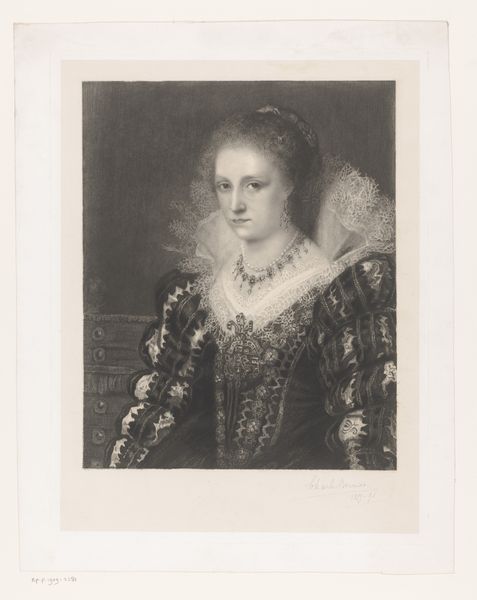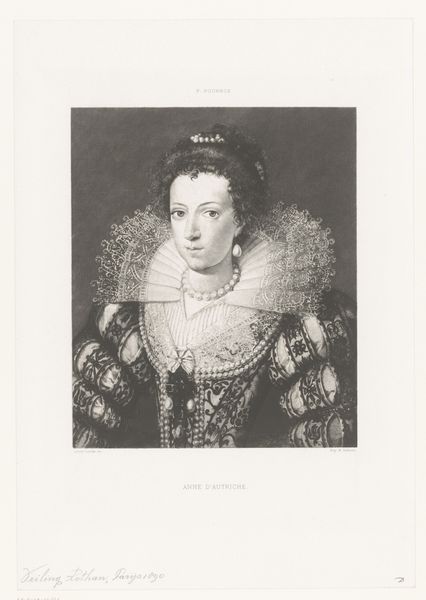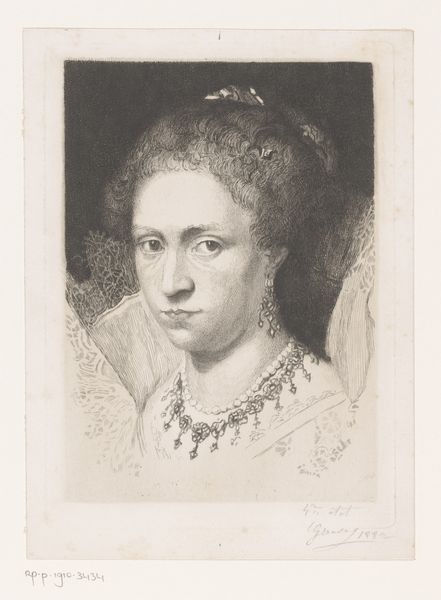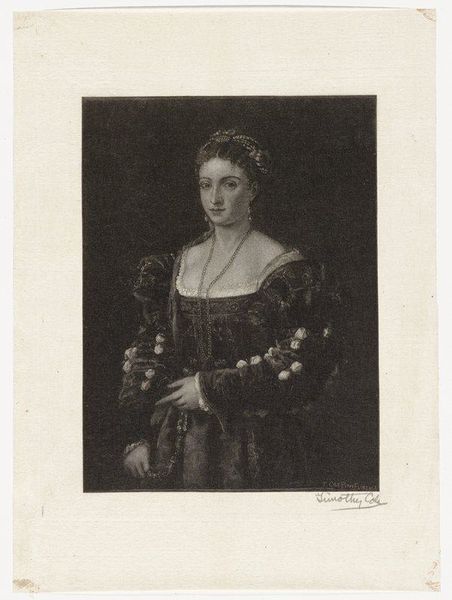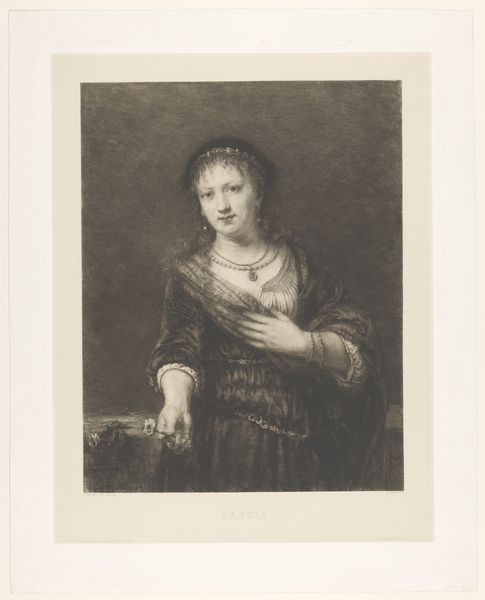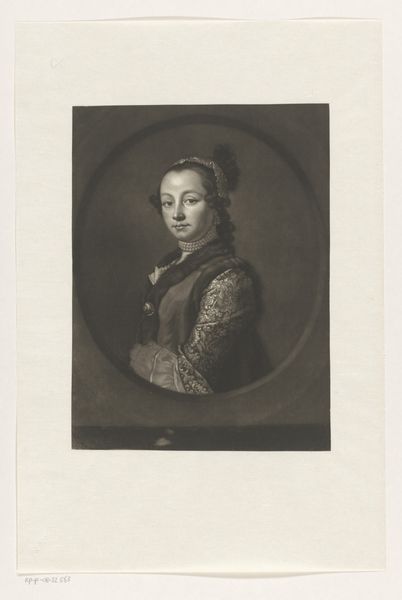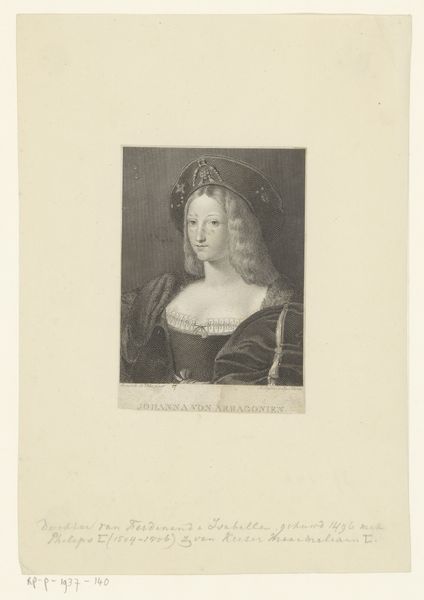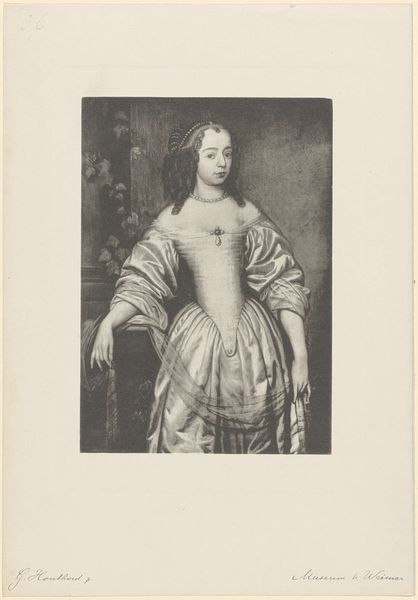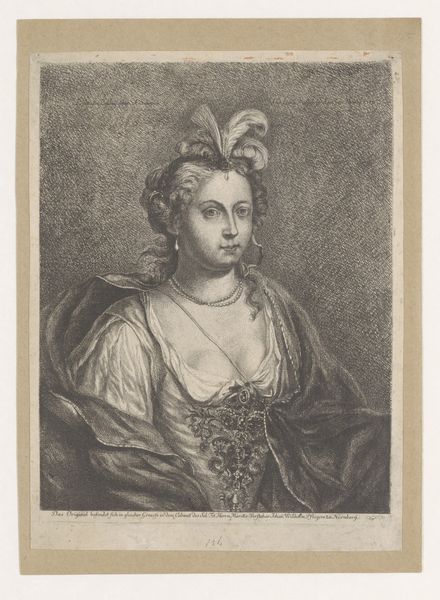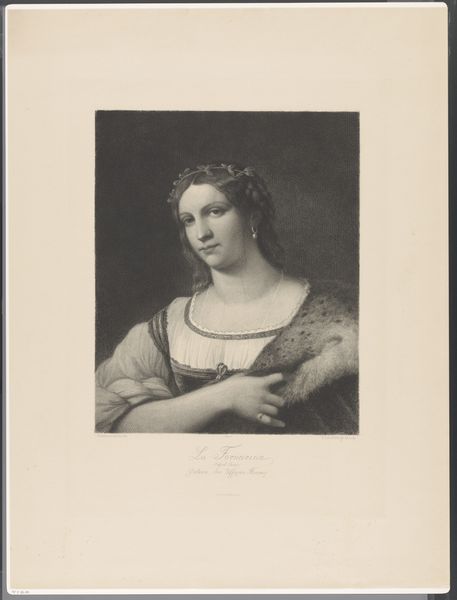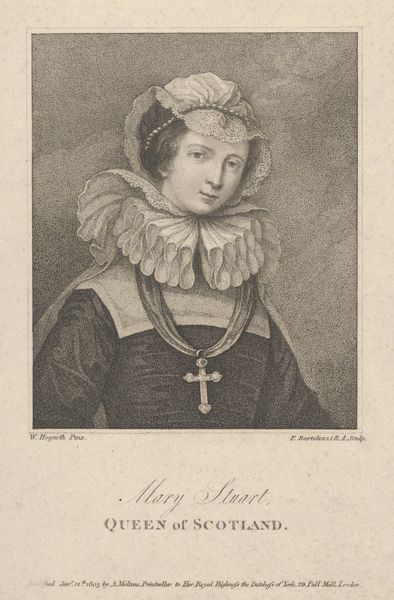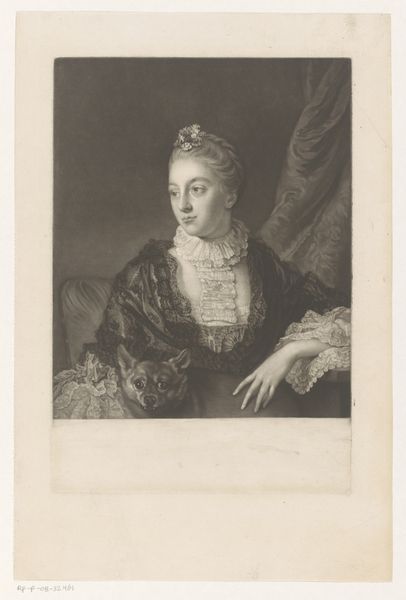
drawing, print
#
portrait
#
drawing
# print
#
19th century
#
academic-art
#
realism
Dimensions: height 395 mm, width 298 mm
Copyright: Rijks Museum: Open Domain
Curator: Let's turn our attention now to Charles Théodore Bernier’s “Portret van Jacqueline de Caestre” from 1890, rendered in drawing and print. Editor: The sitter's pale face is certainly striking; her expression is quite severe. There's something almost ethereal about her, heightened by the elaborate ruff and the subtle shading. Curator: Yes, Bernier captures her elegance through precise line work and careful manipulation of light and shadow. But I'm drawn to consider the labor that goes into such a detailed portrait. What sort of statement is made by recreating in painstaking detail the expensive dress and jewelry of someone who can afford this leisure? The ruff is such a feat of handmade skill. Editor: The sharp lines composing the clothing frame Jacqueline in the space, and there's an impressive tonal range in the blacks of the garments. The visual texture in her clothes provides depth that contrasts interestingly with the more subdued treatment of the face. Curator: Looking at it from a different perspective, a printed portrait also allows wider dissemination and consumption of images of the upper classes. How does this process both immortalize Jacqueline while simultaneously democratizing her image? It almost flattens her as an individual, doesn't it? The material print, its existence dependent upon the artist's and printer’s labor and consumed en masse, is interesting in that context. Editor: Interesting point. Yet it’s undeniable that Bernier, whether consciously or not, has composed the work to guide the viewer’s eye right to her face, framing it so we linger on that gaze, a direct, almost melancholic expression that seems so at odds with the ornamentation surrounding it. I am also taken by the slight asymmetry and asymmetry, providing the woman with a more immediate, realistic look that diverges slightly from a perfect image of womanhood. Curator: It seems that academic conventions around the art of the 19th Century were concerned less with presenting actual realities than with constructing an image of power, which Bernier has participated in recreating here through the material production of printed portraits. Editor: It makes me consider the careful artistry, which seems almost at odds with what, to me, is a somewhat sorrowful subject, one gazing directly from beyond the pictorial plane. Curator: It truly is fascinating how the methods of artistic reproduction intertwine with social messaging. Editor: Indeed. Viewing Bernier’s portrait provides us with an unexpectedly intimate encounter.
Comments
No comments
Be the first to comment and join the conversation on the ultimate creative platform.
